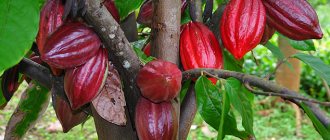Why does a person fall asleep?
Humanity has been dealing with sleep issues for a very long time, but this topic (like any other) has not been fully studied, although there are a number of good concepts. Pioneers in sleep research hypothesized that there was a sleep factor, a substance that accumulated during the day and caused drowsiness [1]. It is believed that the Japanese physiologist Kuniomi Ishimori was the first to try to isolate the sleep factor [2]. Also among the first were René Legendre and Henri Piéron, who induced sleep in dogs by injecting them with a substance obtained from the brains of other sleep-deprived dogs [3].
Modern scientific evidence suggests that adenosine is well suited for the role of a sleep factor. Adenosine, a ribonucleoside consisting of adenine and ribose [4], plays a huge role in our body. It is a component of the genetic material of cells, in addition, it is part of the “energy” compounds in our body - such as adenosine triphosphate (ATP). It has a number of other functions, but for the purposes of this article, the interesting one is its role as a signaling molecule with broad physiological effects, both in the brain and beyond. For its functions, adenosine was even nicknamed the signal of life [5] and the body's natural defense [6].
What about vigor and strength? Don't they increase in number when we drink coffee?
Surprisingly, the answer to this question is no!
In reality, coffee does not give us a real boost of energy. It simply blocks the feeling of drowsiness for a while (and then only for some people).
Here's how it works.
The neuromodulator adenosine causes drowsiness. Caffeine blocks adenosine receptors and temporarily increases our alertness and attention. It turns out that when we drink coffee, it only seems to us that we have more energy. But in reality, we simply stop accepting our body's signals about sleepiness.
Some time after drinking coffee, we may again feel tired and sleepy. At the same time, most likely, they will be felt even stronger and more clearly.
And since brain cells tend to adapt to constantly incoming doses of caffeine and produce even more adenosine receptors, over time we will have to significantly increase the dose of caffeine in order to achieve the “invigorating” effect to which we are accustomed.
Remember: if you constantly feel tired or stressed, the best way to get yourself into optimal health is to eliminate the underlying stressors that cause fatigue. And don’t try to stimulate your body with doping. Whether it's an energy drink, strong tea or coffee.
Where does adenosine come from in the brain?
There are several sources:
- ATP hydrolysis [7].
- The result of the activity of glial cells [1].
- Others [7].
But the main supplier is ATP. The human brain consumes up to 25% of the body’s total energy [8]. He gets it mainly from adenosine triphosphate. From the abbreviation you can understand the structure of the molecule: adenosine and three phosphate molecules. Energy is released through the hydrolysis of ATP. In one of his lectures at Postnauka, Vyacheslav Dubynin gave a good analogy with this process [9]. He compared ATP hydrolysis to shooting from a pistol. There are only three shots (three opportunities to split off the phosphate molecules), and each shot releases energy that the body's cells use for various processes. And after three shots, as you might guess, only an adenosine molecule remains. During the day, adenosine accumulates, both intracellularly and extracellularly. Intracellular adenosine leaves the cell using special transport systems.
Next, adenosine begins to interact with adenosine receptors (Fig. 1) [7], [10]. There are four types of receptors in total: A1, A2A, A2B, A3. They are located on neurons, as well as on cells of other organs (heart, kidneys, etc.). All four types are combined into the superfamily of G protein-coupled receptors (GPCRs) [7], about which there are many interesting articles on Biomolecule. You can read more about the 3D structure of adenosine receptors in the article “Structures of GPCR receptors in the piggy bank” [11]. Each of these receptors has its own ligands (substances that bind to the receptor) - agonists and antagonists. “So, what else is this?” - you ask. Nothing complicated really. Agonists are substances that can bind to a receptor and lead to a specific effect (positive or negative). Antagonists can only bind to the receptor, but this will not lead to any effect. So, essentially, they block the receptor from binding to the agonist. What are the agonists and antagonists for adenosine receptors? In fact, there are many substances (if you are interested, you can read about it in [4]), but I will consider two of them: adenosine and caffeine. The former is an agonist and the latter an antagonist of adenosine receptors [7], [10].
Another article about adenosine receptors is participating in the competition: “Adenosine receptors: the story of the great deception” [12]. - Ed.
Figure 1. Structure of adenosine and its mechanism of action. The chemical formula of adenosine is presented, where oxygen molecules are indicated in red and nitrogen molecules in blue. As depicted in the figure, the receptor consists of exactly seven domains—a distinctive feature of all four types of adenosine receptors. The pink flow reflects the effect of adenosine on the cell.
drawing by the author of the article
So, what effect does adenosine have when it binds to receptors? The role of adenosine in sleep induction has been well studied [1], [13–16]. Essentially, it makes us sleepy, albeit with some caveats, and this is a very interesting mechanism. Brain cells work for a long time, a lot of adenosine accumulates, it binds to adenosine receptors, and the cells receive a signal that it is time to “rest.” These processes allow neurons not to overstrain.
However, if you go deeper, everything is more complicated. Not all mechanisms are still understood. By interacting with different receptors, adenosine leads to different effects. Moreover, there is evidence that by interacting with the same receptor (for example, with A1A) in one region of the brain, adenosine can induce sleep, and by binding in another - awakening [1].
How caffeine gets into the blood
Caffeine has lipophilic
properties - it dissolves well in lipids, that is, in fats. The membranes of our cells, and therefore our biological barriers, are made of lipids.
The walls of the intestine and blood vessels are not an obstacle for the lipophilic substance; absorption occurs quickly and with virtually no loss. Moreover, absorption from liquid products (coffee, energy drink) is faster than from solid products (chocolate or, for example, brownies).
Within an hour, the concentration of the substance in the blood reaches its maximum.
Let's get down to business
What do you think coffee, tea, chocolate, energy drinks and cocoa have in common? They all contain caffeine. Yes! After a little background, I’ll move on to it. Caffeine is a chemical compound from the class of alkaloids [17]. It is the most widely used psychostimulant substance [18–22] and has a number of physiological and biochemical effects. Caffeine affects the nervous, cardiovascular, respiratory, excretory systems, and components of the gastrointestinal tract.
Caffeine is found in seeds, beans, and leaves of a large number of plants (coffee, tea, cocoa, etc.). It is consumed mainly in the form of drinks (coffee, tea, energy drinks), chocolate and chewing gum, but is also found in toothpastes. Currently, the caffeine content in various food products has been calculated [23].
Up to 99% of consumed caffeine is absorbed into the blood within 45 minutes [24]. In plasma, its concentration peaks between 15 and 120 minutes after oral administration [24].
How does caffeine affect the human body? Its effects are concentration dependent. In moderate doses, it causes such positive subjective effects as a surge of energy, increased activity, sociability, and general well-being. In large doses, it can lead to a strong increase in blood pressure and other bad phenomena. What are the recommendations for caffeine consumption? Up to 400 mg/day for adults, up to 300 mg/day for pregnant women, up to 2.5 mg/kg/day for children and adolescents [20].
Almost all of caffeine's effects are due to its role as an adenosine receptor antagonist (Figure 2). The fact is that caffeine has a similar structure to adenosine, due to which it can bind to its receptors. But it does not have any stimulating or suppressive effect on cells. Caffeine simply blocks the receptors for adenosine. The latter does not realize its effects and “artistically yearns from his grief,” as Andrei Kurpatov writes (though he is not entirely talking about caffeine). This point is key to understanding the physiological effects of caffeine. It doesn’t add any energy, it simply doesn’t allow the neurons to receive the signal that it’s time to take a break and rest. At this time, a person feels an incredible surge of strength... But, as one might guess, it is imaginary. All this lasts approximately 2.5–4.5 hours [24]. Why exactly so much? This is the so-called half-life , or half-life , - the period of elimination of half of the substance entering the body. Once it expires, the effects of this “energizing drink” quickly wear off. Adenosine binds to receptors freed from caffeine, and the person is tired again and wants to sleep.
Figure 2. Structure of caffeine and its mechanism of action. The chemical formula of caffeine is presented, where oxygen molecules are indicated in red and nitrogen molecules in blue. There is no pink stream, as in the previous figure - caffeine has no effect on cells, it only blocks the adenosine receptor.
drawing by the author of the article
As I wrote above, adenosine receptors are not only found in the brain. They are present in both the heart and kidneys. The physiological effects of caffeine on the activity of these organs may also be explained by blocking adenosine receptors. If adenosine interacts with receptors in the heart and kidneys, it leads to inhibition of their activity. If caffeine blocks the receptors, this manifests itself as tachycardia (increased heart rate) and polyuria (increased urination). These effects are most likely familiar to you from personal experience.
Recently, the therapeutic potential of caffeine in relation to neurodegenerative diseases such as Alzheimer's, Parkinson's, etc. has been widely discussed in the scientific community [25], [26].
What is caffeine
In its pure form these are white bitter crystals. “According to the passport,” the substance has an unpronounceable name: 1,3,7-trimethylxanthine.
It is found in different products and, oddly enough, its “nickname” depends on the product. Caffeine is extracted from coffee, theine from tea leaves, mateine from Paraguayan mate tea, and guaranine from the South American guarana vine. In fact, they are the same chemical compound.
Is caffeine addictive?
If you follow the latest ISD-11 (International classification of diseases, 11th revision - ICD-11, International Classification of Diseases 11th revision) from the World Health Organization, then yes, caffeine addiction is a mental disorder [25]. The DSM-5 (Diagnostic and statistical manual of mental disorders, 5th edition) from the American Psychiatric Association identifies caffeine use disorders as an area for further research [28], [29]. . Also, the DSM-5 describes a diagnostic scheme with nine criteria for making a diagnosis of Caffeine Use Disorder [29], [30]. Below are three main ones:
- Constant and unsuccessful attempts to reduce and control caffeine intake.
- Continued use of caffeine despite knowledge of a physical or psychological problem.
- Withdrawal syndrome or the use of caffeine to relieve this syndrome.
It is important to note that not all people become addicted to caffeine. For its development, certain conditions are necessary (high dosages of caffeine, simultaneous consumption of various caffeine-containing products, etc.) [30].
What is withdrawal syndrome ? WHO defines it as follows: it is a group of symptoms of varying clustering and severity that occur when the use of a psychoactive substance that has been used repeatedly, usually over a long period and/or in large doses, is stopped or reduced [31]. That is, in essence, this is a “breaking”, excuse the jargon. So, when a person does not consume caffeine for several hours (from 12 hours [22]), he begins to experience the following symptoms (Fig. 4):
- headache;
- fatigue;
- decreased energy;
- decreased attentiveness;
- drowsiness;
- irritability;
- problems with concentration;
- depressed mood;
and others [23].
Figure 3. Basic symbols for the following pictures
drawing by the author of the article
Figure 4. The mechanism of withdrawal syndrome formation in caffeine addiction. In the picture, 45 minutes and 2.5–4.5 hours correspond to the absorption time of caffeine into the blood and the half-life of caffeine, respectively. 12–24 hours reflects the average amount of time a person goes without consuming caffeine before experiencing withdrawal symptoms.
drawing by the author of the article
On the Internet, caffeine is often called a drug, but scientists have not reached a consensus on this issue. But we can say for sure that caffeine does not have the same impact on a person’s social life as drugs like opioids [32] or LSD [33].
Caffeine overdose
Caffeine and caffeinated drinks are not a cure for stress or a “magic potion.” They will not give you super-strength or open up new opportunities, but will only give you access to the resources of your body. Drinking large amounts of caffeine can lead to an overdose
. They can be recognized by the following set of signs:
- continuous rapid heartbeat;
- anxiety and insomnia;
- stool disorder;
- frequent urge to urinate;
- dizziness;
- intestinal cramps;
- facial redness;
- throbbing pain in the head;
- unquenchable thirst;
- nausea and discomfort.
Approximately the same symptoms are observed in people with hypersensitivity to caffeine. An indirect sign of such hypersensitivity may be intolerance to chocolate and other products containing caffeine.
Are tolerance and addiction the same thing?
It is necessary to distinguish between these two concepts. If addiction means the body's need for caffeine, then tolerance means the body's immunity to caffeine. What does it mean? This means that caffeine does not exhibit its physiological effects for a number of reasons.
How does caffeine tolerance develop? There are a number of concepts for its formation. A striking example is the concept of an increase in the number of adenosine receptors in response to long-term intake of high doses of caffeine [14], [34]. How does all this happen? See Figure 5 and read the text below.
Figure 5. Mechanism of caffeine tolerance formation. The picture shows the consistent change in the effect of caffeine on the body. At first, caffeine has an invigorating effect, but then has no effect on the body due to the formation of new adenosine receptors. An increase in the number of filled circles reflects an increase in the amount of adenosine, caffeine and improved well-being. A decrease in the number of filled circles reflects the opposite processes.
drawing by the author of the article
I'll use one of the main sources of caffeine - coffee. Caffeine tolerance is typical for people who drink coffee in large quantities and on a regular basis. This usually happens in the morning or during a break between work/study. They drink it for various reasons: it helps them wake up, it smells delicious, it gives them energy, or they want to feel like they’re part of that crowd running around the metropolis (fashionable, in short). Well, in general, after drinking coffee, a person feels like “king of the hill.” You don’t want to sleep, your heart starts beating faster, you feel an incredible surge of energy, and sometimes you want to go to the restroom. The mechanism here is still the same - blocking adenosine receptors.
The fact is that with chronic caffeine consumption, adenosine cannot attach to its receptors. The body sees that there is a lot of adenosine, which means it has nowhere to cling to - there are few receptors! In response to this, new adenosine receptors are synthesized in the brain. This is where adenosine successfully interacts with them, and the person begins to feel drowsiness and fatigue, although he continues to drink coffee in relatively large quantities.
So, one regular dose of caffeine is no longer enough. The person begins to drink more. And everything goes the same way. At first it will help, but then it won’t (new receptors are formed again). I hope you get the point.
Why are there so many myths, guesses and confusion surrounding the benefits of coffee? (Can everyone drink coffee)
Before we talk about the benefits of coffee and look at some of the research that points to it, I want to convey one important point to you.
Coffee affects each of us completely differently.
And while ample evidence shows that coffee can have a positive effect on life expectancy and reduce the risk of developing serious diseases, we should remember that coffee can be both very beneficial for some people and very harmful for others.
Because despite all our similarities, we continue to be different. And the only working way to understand whether you should drink coffee is to take a comprehensive approach to this issue.
First, you should pay attention to the symptoms that occur after consuming it. Is there irritability, lethargy, hyperexcitability, insomnia?
Secondly, you need to make sure that you are not part of the group of people who should not drink coffee (temporarily or at all) for various reasons. I will list them a little later.
Thirdly, those who are especially advanced and love to get to the very essence can take a genetic analysis. This will help you understand how quickly your body absorbs the caffeine it receives.
We will talk about all this later in the article. But we’ll start with research on the benefits of coffee.
5 beneficial properties of coffee: what it can protect us from and what it will help us cope with (is it really possible to drink coffee for your own benefit?)
Over several decades, many studies have been conducted on the benefits of coffee. As a result, we found that it can not only reduce the risk of developing diseases of the cardiovascular system and oncology, but also slow down aging and serve as a preventive measure for Parkinson’s disease and depression.
Moreover, two large studies published in July 2017 (Annals of Internal Medicine) suggested that drinking coffee in general may reduce mortality. This pattern and relationship “coffee consumption - increased life expectancy - decreased mortality” was observed among various European populations, races and ethnic groups. ()
Let's talk about the benefits of coffee in even more detail.
Coffee is a source of antioxidants that protect the body from inflammation and oxidation
Chronic inflammation and oxidative damage can significantly increase the risk of many common diseases (cardiovascular disease, oncology, metabolic syndrome, diabetes, etc.) We are talking about oxidative stress - the process of cell damage as a result of oxidation.
This means that anything that has an antioxidant effect can protect cells from the effects of free radicals, prevent and even reverse many diseases, and generally slow down the aging of the body. And this is where coffee comes into the picture.
First, coffee contains caffeine, a natural source of antioxidants. Secondly, coffee contains a lot of polyphenols - compounds that have an antioxidant effect.
What do we get as a result? Coffee may turn on antioxidant genes, protect against oxidative damage to the gastrointestinal tract and DNA (), reduce inflammation in body tissues, and have a beneficial effect on “good cholesterol” levels. ()
Coffee may reduce the risk of heart disease
In a review and meta-analysis of 36 studies, researchers found an association between coffee consumption and a reduced risk of cardiovascular disease. Moreover, those who drank 3-5 cups of coffee a day had minimal risk. ()
Essentially, this means that coffee can protect us from coronary heart disease, stroke, heart failure, and overall premature death from cardiovascular disease.
It was found, for example, that people who regularly drank at least 1 cup of coffee per day had a 20% lower risk of stroke compared to those who rarely drank coffee. (,)
Finally, regular coffee consumption was associated with higher levels of good cholesterol and lower levels of bad cholesterol, a reduced risk of metabolic syndrome, and a reduced risk of obesity and type 2 diabetes. (,,,)
Coffee may reduce the risk of cancer
Drinking caffeinated coffee may reduce the risk of developing postmenopausal breast cancer, reduce the number of recurrences in women diagnosed with breast cancer, and even inhibit the growth of an existing tumor.
All this happens because coffee contains hundreds of biologically active compounds (flavonoids, lignans and other polyphenols). And they can suppress metastasis, regulate genes involved in DNA repair, protect cells, and also curb inflammation.
More than 1,000 studies have found a link between coffee and the successful prevention of certain types of cancer. (,) Including breast cancer, liver and colon. (,,,,)
Coffee may prevent Parkinson's disease
Various studies indicate the possibility of reducing the risk of developing the disease by 32-60%. (,,) Scientists suggest that the positive trend occurs due to the good state of the intestinal environment. And it, in turn, occurs due to increased intestinal motility caused by drinking coffee. ()
It could also be that caffeine is a neuroprotectant. That is, a medicinal substance that protects brain cells from damaging influences, prevents their death and improves their functioning.
By the way, caffeine will protect you from Parkinson's disease regardless of how quickly your body absorbs it. A little later we will talk about slow and fast metabolizers.
Coffee may protect against depression
A large study of more than 50,000 women found that the risk of depression was reduced by drinking caffeinated coffee. ()
Perhaps this is the case when a cup of good freshly brewed coffee with spices (cardamom, cloves and pepper) can be an excellent prevention of winter blues caused by short daylight hours.
If you're interested in looking at the history of coffee and depression in numbers, a 2021 study will tell us that men and women who drink coffee frequently (2 cups or more a day) are 32% less likely to suffer from depression than those who don't drink coffee at all. doesn't drink coffee. ()
Who benefits from drinking coffee?
To summarize, I would like to say that you can drink coffee (and it will be good for you!) if you generally feel good and do not experience unpleasant symptoms when drinking it. That is:
- You sleep well: you fall asleep easily, sleep soundly, and wake up quite refreshed.
- You have the strength to play sports, you manage to improve your results in sports, and you recover quickly after training.
- There are no symptoms of chronic fatigue: constant lack of strength, irritability, distracted attention.
- You don't feel hyperexcited or sleepy after drinking a cup of coffee.
If at least one of the above statements does not correspond to your reality, try to reconsider your addiction to coffee. Plus, remember that in addition to these symptoms, there are a number of contraindications and a genetic factor that are also important to consider. I will talk about them in more detail later in the article.
If you are worried and are already frantically imagining how you will wake up and invigorate without your favorite coffee, then I have a surprise for you. In fact, coffee cannot give us a real boost of energy.
What's the result?
Caffeine is the most widely used psychostimulant substance, which has both positive and negative effects on our body, therefore its consumption should be approached rationally. Therefore, the next time you have a deadline, before you drink a couple of cups of coffee or energy drinks, think, maybe it’s better to sleep? (This is if the deadline is not tomorrow morning, God himself ordered it, of course.) Well, if you drink several cups of coffee a day, then I hope this article will be the impetus for you to create a new useful habit (reduce caffeine consumption)!
To better understand and consolidate this information, I highly recommend re-reading this article again, going to the cited literature, watching videos on YouTube (for example, this one: original in English and version in Russian translation) or printing out my poster (Fig. 6).
In conclusion, I would like to thank all the people who helped me identify and correct errors in this article.
Figure 6. Effect of caffeine. You can download the poster in pdf format from this link.
drawing by the author of the article
Benefit for health
- Prevention of neurodegenerative diseases.
Coffee has been proven to help prevent Alzheimer's and Parkinson's diseases. For example, in an experiment with mice, the amount of “bad” abnormal proteins in the area of the brain responsible for memory decreased. - Stroke Prevention
.British scientists conducted a study with a group of 83,284 people who were given 2-4 cups of coffee daily for several months. Let's monitor the well-being of the experimental subjects, scientists concluded: drinking coffee reduces the risk of stroke by 20%.
- Cancer prevention.
There are several statistical studies that show that people with a moderate love of coffee are less likely to get cancer. This is probably due to the fact that it contains powerful antioxidants. They are approximately 500 times stronger than green tea extract or vitamin C.











